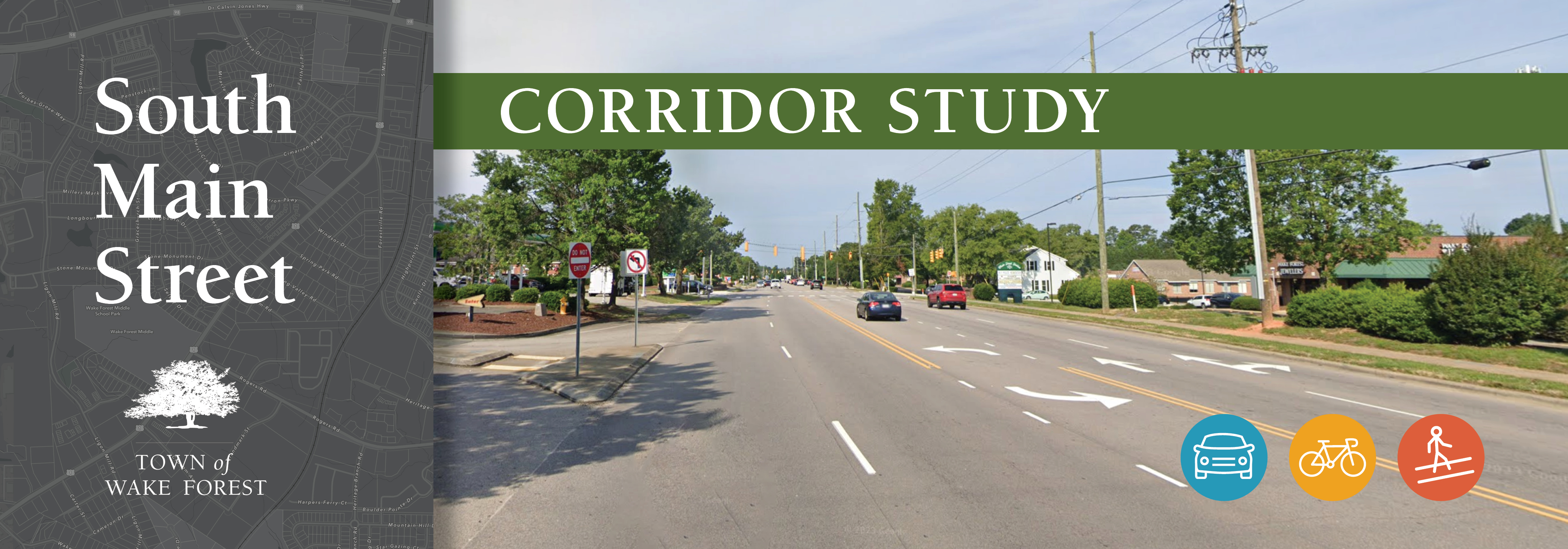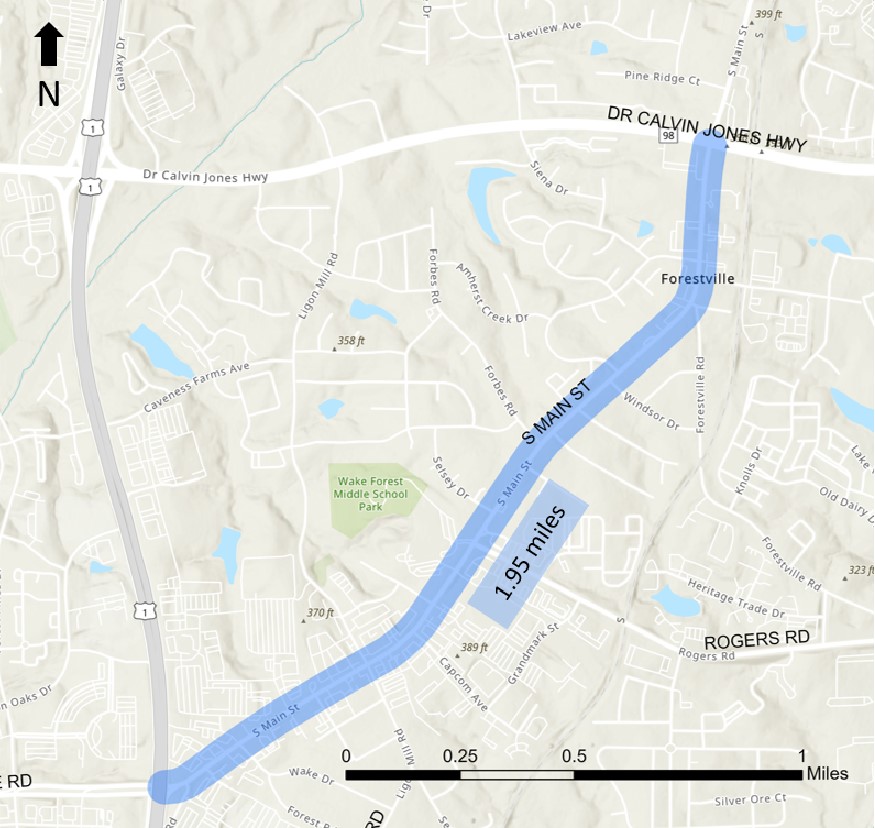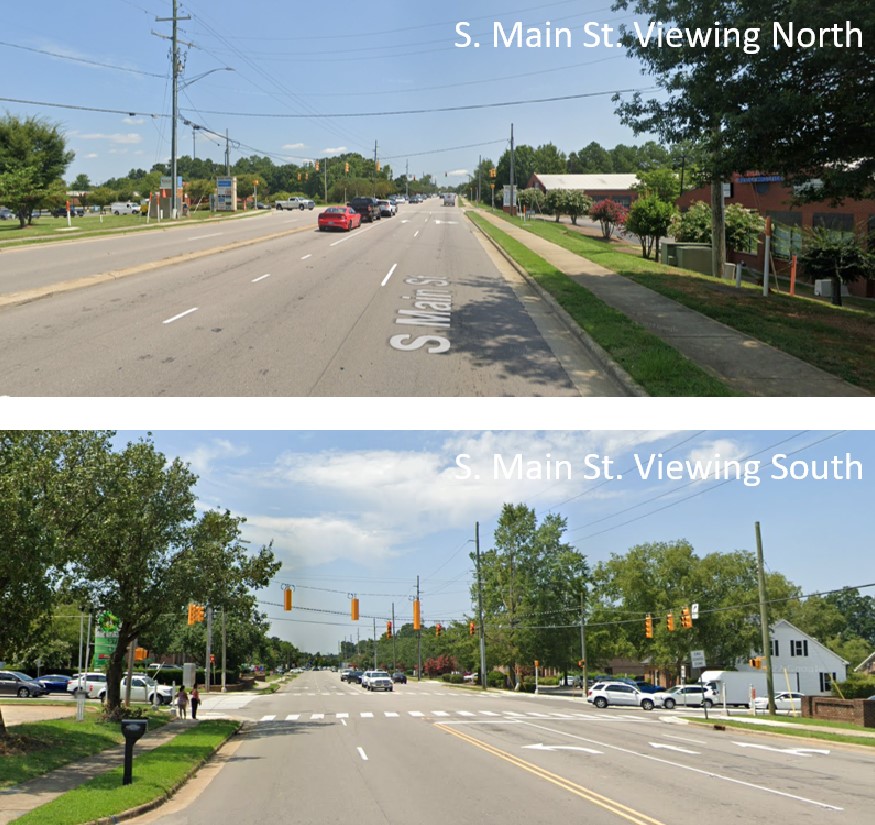South Main Street Corridor Study
Overview
The adopted 2019 Town of Wake Forest Comprehensive Transportation (CTP) contains a number of action items aimed at improving street connectivity, public transportation, safety, and bike/pedestrian infrastructure.
One significant action item from the CTP was to study and recommend access management policies that would improve the South Main Street corridor for drivers, cyclists, and pedestrians. Due to the increase in traffic congestion, crash incidents, and challenges for cyclist and pedestrians, the Wake Forest Board of Commissioners authorized the study to commence in 2023.
The study was presented to Board of Commissioners and approved in July 2024.
Background
South Main Street (US1 Alternate) is an NCDOT-owned and maintained roadway running from Capital Boulevard/US1 to Dr. Calvin Jones Highway/NC 98 Bypass in proximity to historic Wake Forest district. This study will include a Study Listed Historic District as well as properties that are listed individually in the National Register of Historic Places and/or Local Historic Landmark Properties.
The South Main Street corridor cross-section varies and includes on-street bike facilities of non-contiguous segments between Rogers Road and NC98. Sidewalks and a located bus service (the Loop) are included along portions of the corridor as well. As one of the major vehicular connections in Town, this corridor is heavily travelled, and the uncontrolled access and limited multimodal infrastructure has created significant safety concerns throughout the corridor. The 2019 Comprehensive Transportation Plan (CTP) indicated high levels of crashes on the corridor.
Purpose & Goals
The Town wishes to evaluate the corridor in terms of access and mobility and to determine feasible recommendations for improving the safety, comfort, access and multimodal mobility for all users. The final deliverables will reflect two key goals:
Evaluate existing roadway conditions and multi-modal access on the corridor
The Study will evaluate existing roadway capacity and volume, safety, future traffic growth, impacts to cultural and historic resources, and multi-modal access.Develop a preferred conceptual design
The Study will provide a high-level concept design of the entire corridor with recommended solutions for access management, intersections, and multi-modal connectivity along the corridor.



